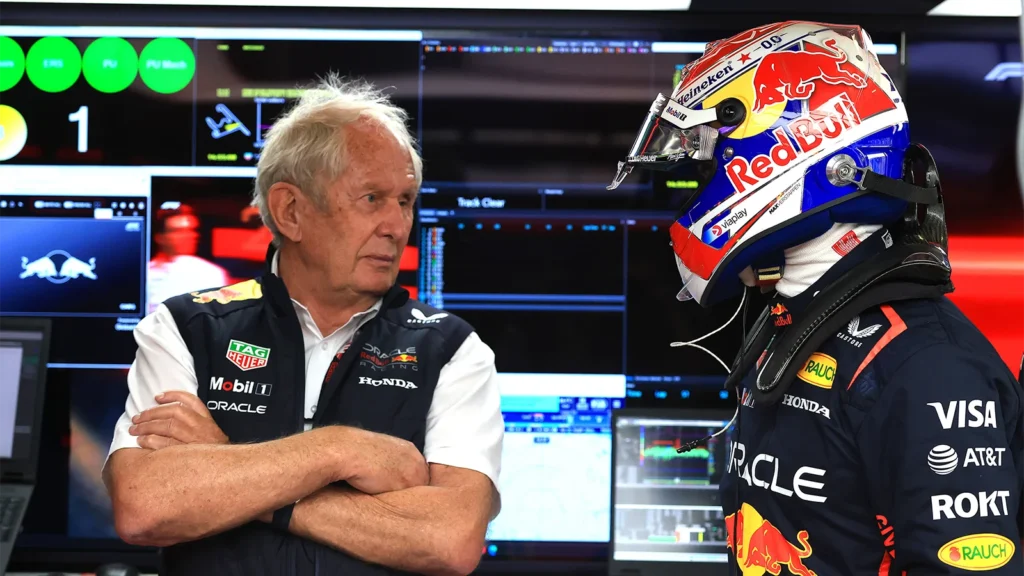Red Bull senior advisor Helmut Marko revealed behind-the-scenes set-up tweaks inspired the team’s improvement at the Formula 1 Saudi Arabian Grand Prix.
Verstappen and Red Bull have endured polarising results across the 2025 campaign to date.
The Dutchman finished second in Australia, battled to fourth in China, won at Suzuka, was dismayed with sixth in Bahrain and narrowly missed out on the win in Saudi Arabia last time out.
Red Bull’s RB21 has through corner balance issues, tyre preservation limitations and a very narrow operating window.
Previously, Team Principal Christian Horner revealed the team “turned the car upside down” to help Verstappen win in Japan and Marko revealed a similar operation propelled the Dutchman to a strong result at the Jeddah Corniche Circuit.
“Let’s focus on the positive: especially after the difficult weekend in Bahrain, there was a great sense of relief within the team, about how well things went in Jeddah,” Marko wrote in his column for Speedweek.
“This competitiveness also came as a bit of a surprise to us. We didn’t expect to have the upper hand against McLaren. It certainly didn’t look like that on Friday.
“The clear improvement compared to Bahrain is due to several factors. We went in the right direction in terms of setup and it has proven again: it is difficult to find the right setup with our car, but if we can find the best working window, the car is absolutely competitive.
“If it doesn’t work out, like in Bahrain, then we are hovering around sixth place.”

Circuit characteristics vital to Red Bull F1 success
A common denominator across Verstappen’s strong results is the nature of the circuit.
Red Bull’s limitations with its RB21 are mitigated by layouts with predominantly high-speed corners: Albert Park, Suzuka and Jeddah.
Tarmac surfaces are also important.
The recently resurfaced Suzuka layout provided very low degradation, masking Red Bull’s tyre preservation woes that were then highlighted by Bahrain’s abrasive surface.
“The improvement also had to do with the characteristics of the circuit: in Bahrain there are mainly medium-speed corners and very rough asphalt,” Marko explained.
“Jeddah is completely different with very fast and flowing corners and asphalt that hardly causes any tyre wear.
“It was noticeable that the drivers hardly complained about the tires during the race. The drivers were able to drive flat out for the most part.”
Marko added that the Bahrain GP prompted Red Bull to “review the approach” it takes through a weekend to achieve a better understanding of the RB21’s potential.
“After the Bahrain GP, we said that Red Bull Racing needed to review the approach during practice,” he said.
“This has already been implemented in Jeddah, for example by making the qualifying simulations more realistic and thus giving us a better indication of where we stand.
“Our task at the moment is to develop a wider operating window for our race car. And also to reduce certain weaknesses of the car for the races in Europe, and thus improve the basic speed of the car,” Marko concluded.
READ MORE – Red Bull senior figure casts firm stance on Max Verstappen F1 exit rumours










Уютная обивка потеряласть? Химчистка мебели на дому в городе на Неве! Подарим вторую жизнь диванам, креслам и коврам их истинную красоту. Экспертные средства и опытные мастера. Скидки первым клиентам! Детали ждут вас! Жмите https://himchistka-divanov-spb24.ru/